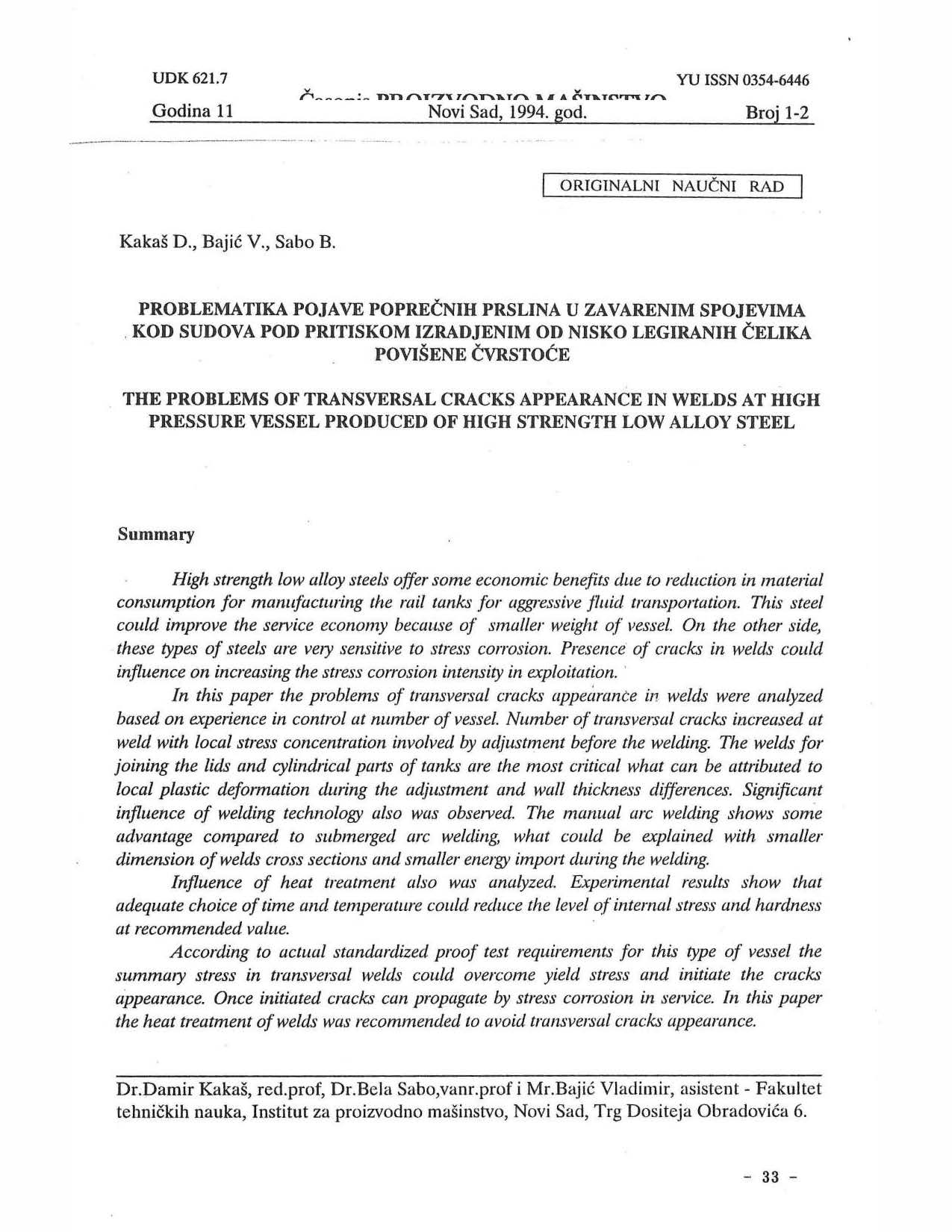The problems of transversal cracks appearance in welds at high pressure vessel produced of high strength low alloy steel

Published 1994-12-01
abstract views: 12 // FULL TEXT ARTICLE (PDF): 4
Keywords
- strength,
- alloy steels
How to Cite
Copyright (c) 2023 Journal of Production Engineering

This work is licensed under a Creative Commons Attribution 4.0 International License.
Abstract
High strength low alloy steels offer some economic benefits due to reduction in material consumption for manufacturing the rail tanks for aggressive fluid transportation. This steel could improve the service economy because of the smaller weight of the vessel. On the other side, these types of steels are very sensitive to stress corrosion. Presence of cracks in welds could influence on increasing the stress corrosion intensity in exploitation. In this paper the problems of transversal cracks appearance ii7 welds were analyzed based on experience in control at number of vessels. Number of transversal cracks increased at weld with local stress concentration involved by adjustment before welding. The welds for joining the lids and cylindrical parts of tanks are the most critical which can be attributed to local plastic deformation during the adjustment and wall thickness differences. Significant influence of welding technology was also observed. The manual arc welding shows some advantage compared to submerged arc welding, which could be explained with smaller dimensions of welds cross sections and smaller energy import during the welding. The influence of heat treatment was also analyzed. Experimental results show that adequate choice of time and temperature could reduce the level of internal stress and hardness at the recommended value. According to actual standardized proof test requirements for this type of vessel, the summary stress in transversal welds could overcome yield stress and initiate the appearance of cracks. Once initiated cracks can propagate by stress corrosion in service. In this paper, the heat treatment of welds was recommended to avoid the appearance of transversal cracks

